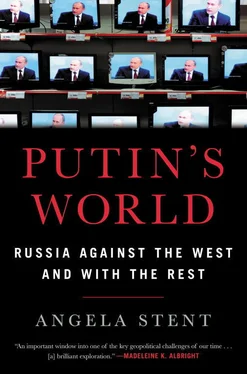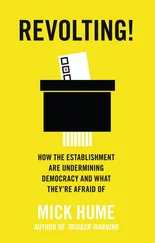It is not surprising, therefore, that as soon as Donald Trump was elected, Abe hoped for a change in the US position on Russia. He visited Trump in New York shortly after his election and apparently met no pushback when he explained why Japan wanted to improve ties with Russia. After Abe’s second visit with Trump—this time at the White House and golfing in Mar-a-Lago—Abe affirmed that the US president had encouraged him to improve ties with Russia: “President Trump understands Japan’s policy to promote dialogue with Russian President Vladimir Putin to resolve the territorial issue.” Moreover, he described Putin as “a man who keeps his promises.” 51
PUTIN’S VISIT TO JAPAN AND ITS AFTERMATH
Putin finally visited Japan in December 2016, eleven years after his previous trip, this time to Nagato, Abe’s hometown in the Yamaguchi Prefecture. Before his departure, an open letter signed by local Sakhalin officials and scholars reminded Putin that the Russian constitution precluded any territorial concessions. “Dear Vladimir Vladimirovich [Putin], we hope that in the course of your talks with the Japanese side you will not depart from the position of the inviolability of the Russian sovereignty over the Kuril Islands.” 52Once Putin was in Japan, right-wing activists in trucks mounted with loudspeakers circled the streets not far from where the two leaders were meeting, blaring “Return the islands” and “Putin go home,” similar to what they had done when Gorbachev and Yeltsin visited.
Putin arrived three hours late, and his attitude toward Abe was more distant than previously. Putin had refused the offer of a male mate for his female Akita dog, which Abe had given him in 2012. And he turned down opportunities both to sample the hot springs and to demonstrate his judo skills, in contrast to previous visits. During the summit, it was all business and how to move toward a peace treaty. Eighty economic agreements that could bring Russia up to $2.5 billion were signed, including joint economic projects for the Kurils. However, no substantial Japanese loans were on offer because these would have contravened Western sanctions.
Before he went to Japan, Putin said in an interview with Bloomberg, “We don’t trade territories.” He went on to explain why ceding the Kurils would be completely different from ceding the island Russia gave back to China in 2004 as part of the final settlement of their mutual border. “The Japanese issue arose as a result of World War II and is set out in international documents linked to the results of the Second World War.” 53This is key to understanding how Putin has approached the Kuril Islands question. Presenting the Great Patriotic War as the crowning achievement in recent Russian history whose results cannot be questioned has been the foundation of Putin’s national narrative. To admit that there was something unsettled or unjust in the Soviet occupation of the Kurils would be to challenge the fundamental legitimacy of Russia’s claim to be a great power—its victory in World War Two.
In the first half of 2017, there was another Putin-Abe summit and a resumption of the two-plus-two talks. The situation in North Korea was a major topic. Although Russia and Japan agree that North Korea should not have nuclear weapons, they do not see eye to eye on how to deal with Kim Jong-un, particularly in the military sphere. Russia has opposed the deployment of the US THAAD missile defense system in South Korea and would also oppose Japan acquiring the Aegis Ashore missile defense system. But in face of North Korea’s increasingly provocative nuclear tests, influential lawmakers are urging Tokyo to develop its own long-range preemptive-strike capabilities. Moreover, Japan has its own unresolved issue with North Korea: the abduction of possibly hundreds of Japanese citizens by North Korea between 1977 and 1983, most of whom have disappeared. 54
Despite Putin’s more conciliatory stance toward Japan, there has been a steady military buildup on the Kuril Islands in the past few years, casting further doubt over Russia’s interest in resolving the territorial issue. This military buildup is a growing problem for Japan. Russia deployed 10,000 extra troops on the islands in 2017. It held a military drill in February 2018 that greatly irritated the Japanese. It is also stationing new coastal missile systems as well as missile defense systems and has hinted that it will enhance its naval presence too. Given the financial constraints on the military, it remains to be seen whether this buildup is sustainable, but it certainly indicates that Moscow has no intention of scaling back its presence on the islands. At the 2017 Saint Petersburg International Economic Forum, Putin explicitly linked the buildup on the Kuril Islands to US missile defense deployments in Europe and Asia: “As for the boosting of our military capabilities in the Russian Far East and the [Kuril] Islands in particular, this is not Russia’s initiative,” portraying the Russian deployments as a defensive response to the United States’ own buildup around Japan. He then argued that, were the islands returned to Japan, the US military would no doubt appear in force on those territories. 55This was hardly a reassuring message for Abe.
For now, the Japanese are focusing on the joint economic development of the islands, which essentially means that Japanese money will support the modernization of what are by all accounts underdeveloped territories. However, the legal questions may prove challenging. Will Japanese companies operate under Russian law? If so, that implies a Japanese recognition of Russian sovereignty over the islands. Japan is now proposing to establish a special set of legal norms by which Japanese firms can invest in the Kurils, but there is opposition to that in the Diet. Meanwhile, Japan’s Ministry of Economy, Trade, and Industry has an official in charge of economic relations with Russia. Japan now has an active economic modernization program in Russia involving pharmaceuticals, energy efficiency, tourism, wind power, and aquaculture.
Abe’s frequent meetings with the Russian leader attest to his conviction that if he continues to build trust, Putin’s stance on the islands may change. The Japanese hope is that in his fourth term Putin will have a freer hand to make a deal and hand back the Habomais and Shikotan. This would happen after a peace treaty was signed. Others in Japan and Russia are far more skeptical that this will happen given Putin’s repeated statements that Russia does not give back territory. Indeed, just before the opening of the Saint Petersburg International Economic Forum in 2018, presidential national security adviser Yuri Ushakov told the Japanese to “get over” their fixation on the islands, stressing that Japan had to recognize the results of World War Two and accept the islands belonged to Russia. 56Abe joined Putin in the plenary, and in his speech to the Forum, proposed that the islands become a symbol of cooperation. 57
Nevertheless, in Japan, Russia is seen as far less of a threat than is China. The fear of a Russo-Chinese “united front against Japan” will continue to drive the Japanese overtures toward Russia. 58Japan views the rise of China with deep apprehension. Indeed, the 250,000-strong Japanese Self-Defense Forces have reoriented their focus from a Cold War–era preoccupation with Russia to a rising China. Tokyo’s relationship with Beijing is multifaceted and complex. The shadow of history—particularly the harsh Japanese occupation of China during World War Two—is ever present. The Chinese have asked Tokyo to stop “whitewashing Japan’s militarist past.” When Abe first came into office, he visited Tokyo’s Yasukuni Shrine to Japan’s war dead—a potent nationalist symbol—enraging the Chinese. Since then, he has not gone on a repeat visit. Moreover, on the seventieth anniversary of the end of the war in 2015, he made statements reiterating a 1995 admission of Japanese contrition and guilt. Nevertheless, a contentious past continues to influence the relationship.
Читать дальше












